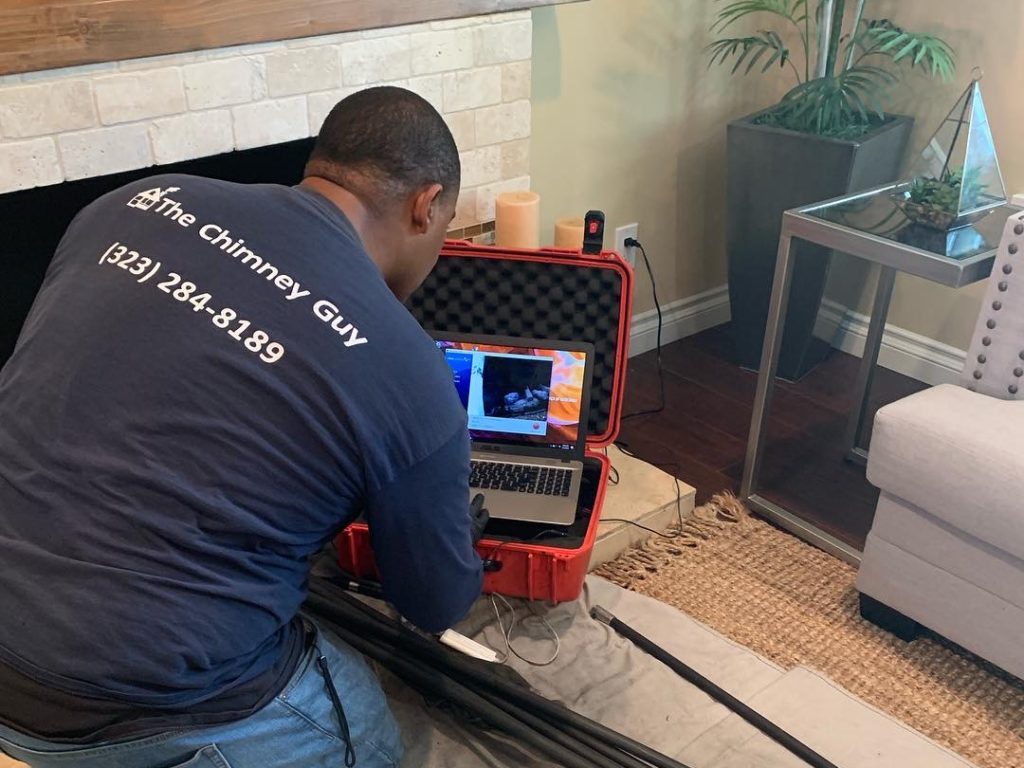In one of our in-house training documents, it says the product of a chimney inspector is:
An accurate written report that communicates clearly and non-alarmingly the true condition of the fireplace and chimney, without scaring the buyer or seller half to death. The report should be delivered to the agent and customer in a timely fashion. It should not inflate or exaggerate the defects of the chimney. It should not be “slanted” in an effort to make the customer more susceptible to getting the repairs done.
That’s not a definition used much in the chimney industry, as far as I know. It’s something we came up with all on our lonesome, to give our chimney inspectors a specific end product they are going for when they do a chimney inspection.
Sometimes we find defects in a chimney that really aren’t much of a safety issue, but might cost a lot to fully “repair.” If we feel it’s not something that warrants the large expense of repairing, we will say so, and we will also say that other chimney inspectors may have a different opinion.
We’re happy to go ahead and do such an optional (in our opinion) repair, and charge lots of money for it, but we won’t tell you it’s a required repair.
We try to exercise judgement.
Determining if a chimney is broken or not sometimes is a difficult question to answer. It’s an expensive question to resolve. It costs a lot of money to rebuild a chimney. Sometimes it’s an easy question to answer. The inspector can get on top of the roof and push on the chimney and it easily moves back and forth. That’s an easy call.
Sometimes the chimney moves, but not that much, and the chimney seems to be at least partly held in place by the structure of the house. Is it broken or isn’t it? If our inspector can’t observe enough facts about the chimney to call it broken or not broken, but it MIGHT be broken, he will usually recommend that a follow-up inspection be done with TWO people doing the “two-man push test.” No, that doesn’t mean that two guys push on the chimney and try to break it. It means that one guy is pushing on the chimney and the other one is looking all up and down the chimney, usually below the roofline, to see if there is a horizontal crack that opens and closes during the pushing. One guy working alone can’t find or observe that, usually, all by himself.
Rust in a prefab (made from steel components) firebox and metal flue pipes is often a judgement call.
How much rust is too much?
Where is the rust and how bad is it?
Often we will see rust inside the firebox, at the ceiling of the firebox. OK. Is it just a surface layer of thin rust, or is it thick and “bubbly?” When poked with a sharp object, like a screwdriver, does the metal deform or bend? Does the sharp object actually poke through the rust? If we feel it’s not progressed too far we will recommend sanding off the rust and painting the area with a black, hi-temp paint, to help reduce future rusting.
Sooner or later rust will win out.
But we try to push that date as far into the future as possible, if we can.
Sometimes the firebox is rusted through, with big holes showing. Then it’s toast. Time to replace the whole system.
Sometimes at the top, one can see that the entire spark arrester cap has dissolved away. If that’s all that’s gone, miraculously, we can install a new stainless steel cap which will last longer than the original.
Sometimes the inspections are easy. Sometimes it takes a lot of poking and prodding and sometimes coming back to the office to talk with guys here to figure out what the story is, and how to fix things.
Either way, we strive to end up with an accurate report that describes the true state of your chimney, and give a list of things needed, if any, to repair it, and a fixed price, if you want us to do the repairs.
Hope that helps..
Mike, The Chimney Guy

Lance is using a video camera to look at the inside of the chimney, the only way to see the true condition inside. One has to know what one is looking at and compare that to the codes and standards, and apply some judgement.
